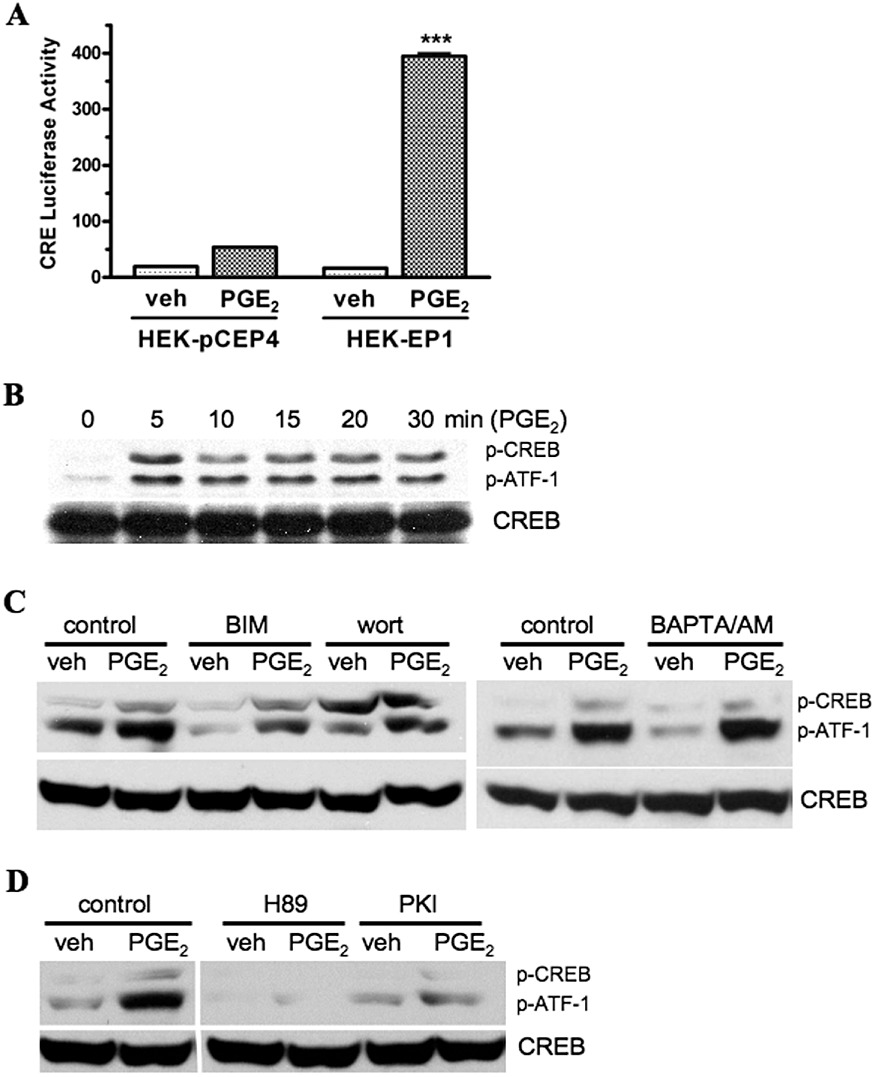Figure 4.

PGE2-stimulated CREB responsive (CRE) luciferase reporter gene activity (A) and PGE2-stimulated phosphorylation of CREB and ATF-1 either alone or following pretreatment with various signalling pathway inhibitors (B, C, D) in HEK cells stably transfected with the human EP1 receptor (HEK-EP1). (A) HEK-EP1 cells or HEK cells stably transfected with empty vector (HEK-pCEP4) were transiently transfected with a CREB responsive (CRE) luciferase reporter plasmid and ∼18 h later were treated either vehicle (veh) or 1 µM PGE2 at 37°C. Luciferase activity was determined the next day. Data are the means ± SEM of quadruplicate measurements from a representative experiment that was repeated three times. ***P < 0.001 compared with the corresponding vehicle treatment; one-way anova, followed by Bonferroni post-test. (B) HEK-EP1 cells were treated with 1 µM PGE2 for indicated times at 37°C and lysates were prepared and subjected to immunoblot analysis with antibodies against either phospho-CREB/ATF-1 (p-CREB/p-ATF-1) or CREB. (C, D) HEK-EP1 cells were pretreated for 30 min 37°C with either vehicle (control), or 10 µM of the PKC inhibitor, bisindolylmaleimide I (BIM), or 10 µM of the PI3K inhibitor wortmannin (wort), or 10 µM of the Ca2+ signalling inhibitor, BAPTA/AM, or 10 and 5 µM of the PKA inhibitors, H89 and PKI, respectively. They were then treated with either vehicle (veh) or 1 µM PGE2 for 5 min at 37°C. Lysates were prepared and subjected to immunoblot analysis as in panel B. Shown are representative immunoblots that were repeated at least three times for each antibody and condition.
